Fig. 1
Stage 1: Early rhino-maxillary fungal sinusitis
Stage 2: Rhino-orbital (Fig 2; Figs. 4, 5, 6 in Chapter “Radiology in Invasive Fungal Sinusitis”)
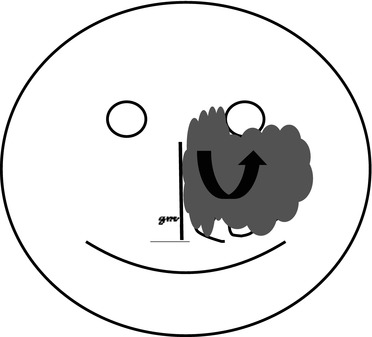

Fig. 2
Stage 2: Rhino-sino-orbital fungal sinusitis
Stage 3: Rhino-orbito-cerebral (Fig. 3; Fig. 7 in Chapter “Radiology in Invasive Fungal Sinusitis”)
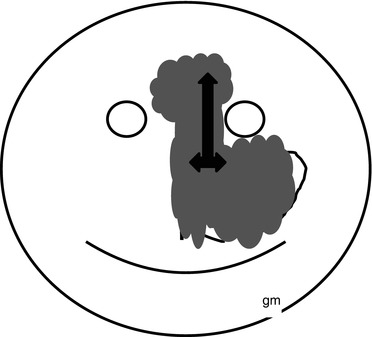

Fig. 3
Stage 3: Rhino-sino-orbito-cerebral invasive fungal sinusitis
Symptoms
The following symptoms, especially in an immunocompromised patient, should arouse the suspicion of fungal disease:
Fever with spikes, not responding to antibiotics. It is the most common presenting feature [7].
Persistent nasal blockage with bloodstained serosanguineous nasal discharge with cough.
With progression of the disease, there could be facial or periorbital swelling (Fig. 4), facial pain, numbness and headache.
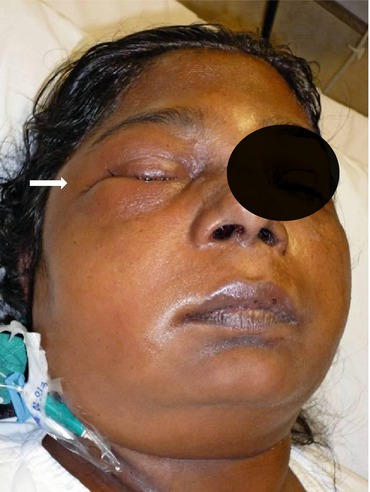
Fig. 4
Facial and periorbital (arrow) swelling
Orbital symptoms: Spread of disease to orbit may cause chemosis, proptosis, ptosis, blurring of vision, loss of vision and ophthalmoplegia.
Cranial nerve palsies especially 2nd, 3rd, 4th, 5th, 6th and 7th nerve due to cavernous sinus thrombosis or temporal lobe mycotic infarcts.
CNS symptoms such as altered consciousness, delirium, convulsions, hemiparesis, hemiplegia or coma may be seen in patients with intracranial involvement.
Examination
The patient is usually under treatment with a physician for a metabolic disorder or oncologist for chemotherapy with neutropenia and then referred to either an ENT surgeon or an ophthalmologist.
ENT Examination
Initial or a cursory nasal examination may not reveal anything significant. Therefore, it is always advisable to decongest the nose and perform nasal endoscopy. A discolouration of the nasal mucosa and serosanguineous discharge should be looked for. Crusting, whitish discolouration (due to tissue ischemia) (Fig. 5) or black discolouration with eschar formation (Fig. 6) (due to tissue necrosis) may be present [8]. There could also be granulation or ulceration of the nasal mucosa. These changes have been most commonly found to occur on the middle turbinate, followed by the septum, palate and inferior turbinate [9]. There may be reduced nasal mucosal bleeding on account of tissue ischemia or infarction. The sentinel signs and symptoms are dark-coloured nasal septal (Fig. 6) or palatal ulcers or eschars (Figs. 7 and 8), fever, headache, nasal crusting, epistaxis, cough and mental changes [10]. There could also be skip lesions due to spread of the infection along the intima of blood vessels (Fig. 9 showing a tongue lesion in a patient of ALL with rhino-orbital mucormycosis).
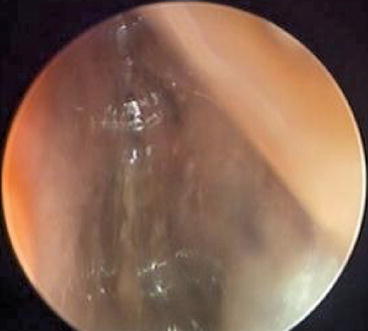
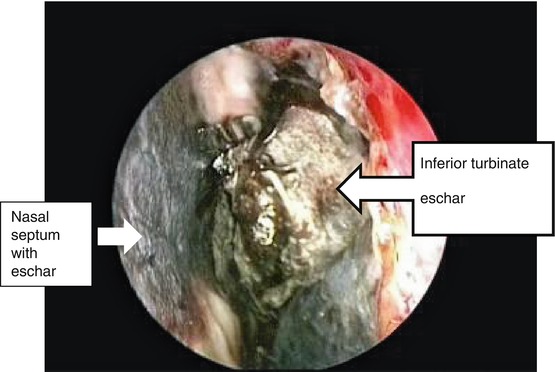
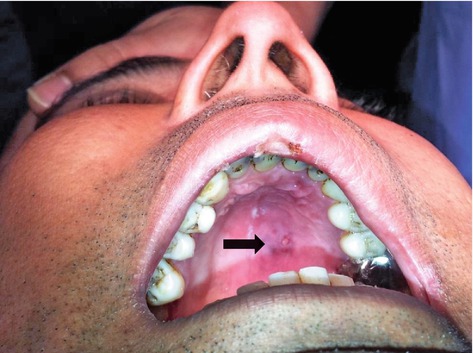
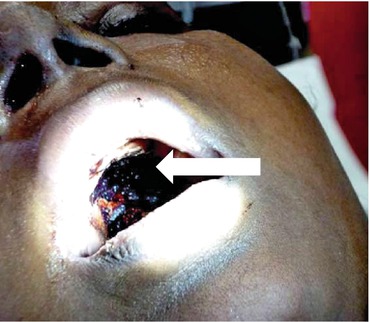
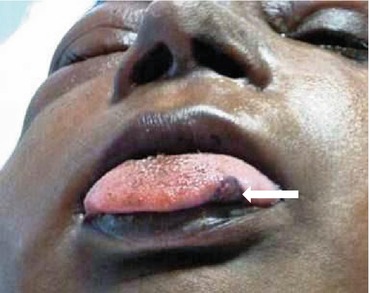

Fig. 5
Endoscopic appearance of discoloured nasal mucosa in a case of mucormycosis

Fig. 6
Progressive nasal septal and lateral nasal wall infarction (arrows) in a case of acute fulminant mucormycosis

Fig. 7
Discolouration of palate (black arrow) in early palatal involvement in a diabetic patient with rhino-orbital mucormycosis

Fig. 8
Palatal infarction (white arrow) in progressive mucormycosis

Fig. 9
Skip mucor lesion on tongue (arrow) in patient with ALL and rhino-orbital mucormycosis
Tissue samples should ideally be taken from discoloured areas of the middle and inferior turbinate or septum under vision during a diagnostic nasal endoscopy.
Teaching point: Samples taken from the nasal vestibule or swabs taken blindly do not help in the diagnosis and instead delay the diagnosis. The samples should be sent for both microbiological (KOH and fungal culture) and histopathological examination.
Decreased facial or nasal mucosal sensations may be present even in early stages of the disease before the development of other signs and symptoms.
Stay updated, free articles. Join our Telegram channel

Full access? Get Clinical Tree


